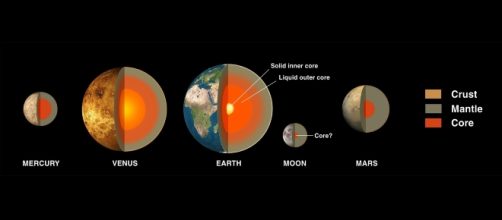Deep space explorations are progressing faster than expected. Scientists are not only aiming to reach Mars but other planets in the Solar System as well. Recently, Japan and Europe introduced a spacecraft that is part of their mission to explore Mercury.
European and Japanese scientists from JAXA and ESA unveiled the BepiColombo spacecraft. The spacecraft will journey for seven years to reach its destination planet. Mercury is considered as the most "enigmatic" in the Solar System.
Mission to Mercury
The joint probe by European and Japanese scientists will launch BepiColombo in 2018.
The European Space Agency (ESA) said it would be the first mission to attempt a close approach to the nearest rock planet to the Sun.
To survive the heat and harsh environment in the region, the spacecraft bears an unusual design. It is somewhat a "stacked aircraft" composed of two orbiters. The orbiters will separate from the rocket and will follow entirely different orbits around Mercury.
BepiColombo is a follow-up on NASA's Messenger Probe
Based on ESA's press release, the new mission will follow up where NASA's Messenger mission left off. The mission will observe longer and approach deeper compared to its American counterpart. According to Phys.Org, the project already spent $1.48 billion and 33 companies are developing it, from 12 European nations and international firms from Japan and the US.
Extreme Conditions in Mercury
ESA has its eye on Mercury because they consider it as the most "peculiar" rock planet in the Solar System. Like other celestial objects, cracks and impacts are visible on its surface. Its temperature is also considered extreme at +450 to -180 degrees Celsius.
How easy is it to reach Mercury? It seems like it wasn't as easy as it sounds.
The project had suffered from previous delays, but scientists are confident that this will push through this time around. According to Airbus, who is one of the developers of the spacecraft, the temperature level in the region contributed to the delay of the mission.
The company said that the probe was designed with high-temperature and multi-layered insulation to survive.
The surface itself was covered with 50 layers of ceramics and aluminum while some parts like the antennae are made with heat-resistant titanium with an innovative coating.
Also, Mercury also has a magnetic field. It is the only rocky planet besides Earth to have that. However, unlike Earth, it doesn't have any protection against solar radiation. Due to its distance to the Sun, its surface is constantly bombarded with radiation levels that could easily destroy life on Earth.
Also, due to its close distance from the Sun, it is a challenge to study and observe Mercury. The Sun's gravity affects the planet, and it makes it difficult to put a spacecraft in a stable orbit around it.


